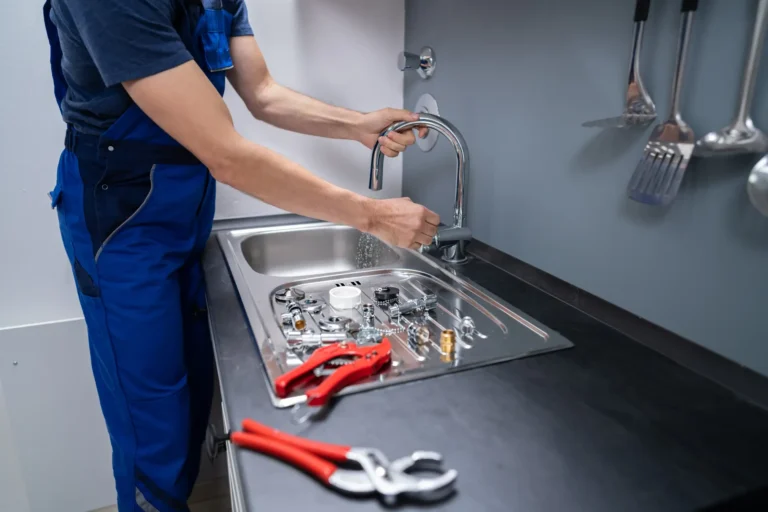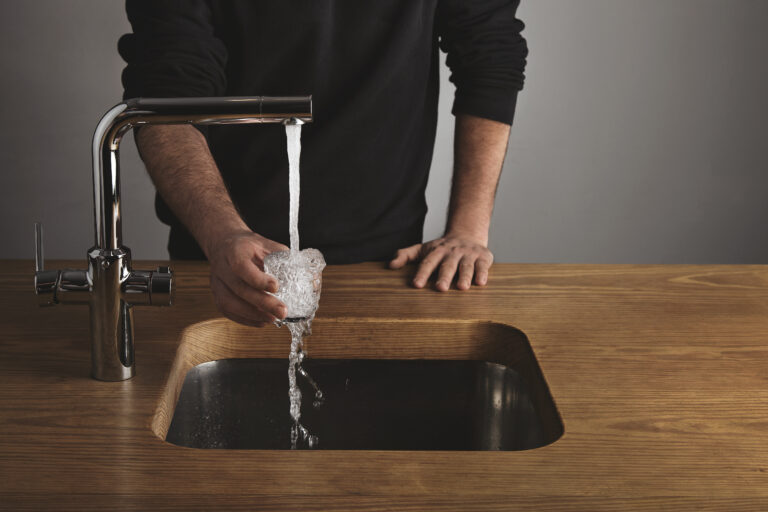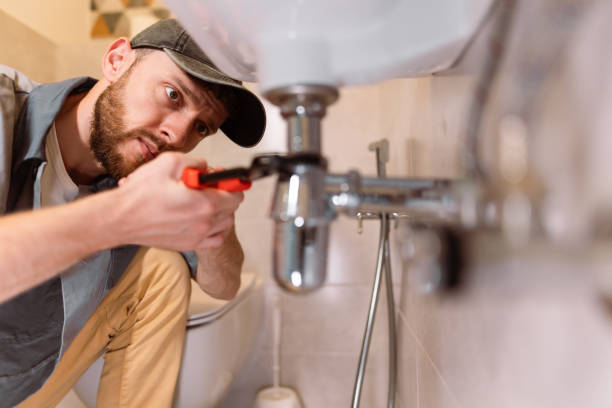
DIY Procedure and Maintenance Instructions
At AAA AUGER, our main objective is to provide fantastic customer service. Customer service goes well beyond the sale or even any specific plumbing service that we may provide.
Many of our customers enjoy tackling specific tasks themselves; so we wanted to provide some articles on how best to accomplish these feats. At any point, should you find yourself in a bind, please never hesitate to contact us for guidance.
Don’t see what you are looking for?
Take a look through the list below or try the search feature…
AAA Auger's Plumbing Tips, Tricks, and More
As with any task, sometimes certain situations can be overwhelming to the novice, so should you need a professional to step in, never hesitate to contact us. Remember, AAA AUGER Plumbing Services is open every day of the year and we never charge extra for nights, weekends or holidays!
Understanding How Do Water Softeners Work in Fort Worth TX: A Comprehensive Guide
The Wild Water West: How Do Water Softeners Work in Allen, TX
How Do Water Softeners Work in Carrollton, TX: The Superhero Saga of Soft Water vs. Hard Water
Pros and Cons of Tankless Water Heaters in Arlington TX: What You Need to Know
A spirited debate between Edgar Allan Poe and William Shakespeare, discussing the pros and cons of tankless water heaters in Richardson, TX, and featuring AAA AUGER Plumbing Services:
Glossary of Terms
Auger Machine

Auger Machine
An Auger Machine is used to resolve drainage problems in sewer and drain lines.
Because most stoppages are caused by solids accumulating within the line, the Auger Machine has proved to be the most sensible approach.
The machine uses a cable housed within a drum. Usually controlled with a foot pedal, the drum spins when the motor is engaged. As the drum turns, the cable is fed into the drain or sewer. When the cable end is fitted with the correct attachment, the drain or sewer can be cleaned as sewage, mineral, fat and other accumulations are alleviated.
Note : Although, with augering, most drainage problems are resolved, there may be cases where other remedies may be necessary.
Kitchen sink drains may require water jetting. However, failure to auger the drain first could lead to back wash situations. More specifically, should a hard blockage exist, water from the water jet is likely to back up into the drain of approach or other connected drains.
If kitchen sink stoppages are fairly common in your household or place of business, water jetting may provide a long term solution and result in better value.
Should the sewer or drain be defective (collapsed, perforated, separated, etc.), augering the line can produce a temporary solution at best and other remedies will be necessary.
Back Water Valve

Back Water Valve
A Back Water Valve is often confused with a Backflow Preventer. However similar in purpose, a Back Water Valve is used in sanitary sewer applications whereas a Backflow Preventer is used to protect potable water.
The Back Water Valve (BWV) is designed to prevent sewage from reversing its intended flow. BWV’s are most commonly found in lift station systems to prevent the backflow of sewage during mechanical failures. However, their use is becoming increasingly popular in new homes.
Imagine the sewer main backing up and causing hundreds of gallons of sewage to back up into your home. Unfortunately, this is not as uncommon as it may seem.
There are many types of BWV’s available. Some may require more maintenance than others. Regardless, all require periodic maintenance which has led their undesirability. That aside, many homeowners would have rather dealt with the maintenance of a BWV opposed to the catastrophe they sustained.
Backflow Preventer

Backflow Preventer
Backflow preventers are mechanical safety devices designed to prevent water from flowing opposite its intended course.
Backflow preventers come in a variety of shapes and sizes and are used in many different applications. The most common application is found in residential irrigation systems. In this application, the backflow preventer is used to prevent contaminated water (water contaminated by fertilizers, animal droppings, etc.) that may gather around sprinkler heads from being siphoned into the potable water supply.
Many municipalities require that backflow prevention devices be installed just beyond the water meter. This requirement helps protect the municipal water source as a whole. The backflow preventer installed at the water meter doesn’t protect the homeowner, but rather all of his neighbors. When everyone has a backflow preventer, it is comforting to know that our chances of becoming ill due to the actions of our neighbors are greatly reduced.
Most manufacturers specify that the device be tested annually by a properly trained and licensed tester. Please see Backflow Testing in our Services section.
Note: When a backflow preventer is installed between the meter and the main water supply of the dwelling, the system becomes a “closed” system. Please see the Thermal Expansion section for more information.
Backflow Preventer Testing

Backflow Preventer Testing
Many manufacturers recommend that their Backflow Preventer be tested annually. Many municipalities are requiring such frequent testing by a Certified Backflow Tester regardless of manufacturer’s recommendations.
AAA AUGER requires each of our shops to have such certified personnel. In addition to proper certification, our testing equipment is calibrated annually to assure proper diagnosis.
After all, a backflow preventer is useless if not functioning properly and could be the difference between life and death.
Ball Valve

Ball Valve
Ball valves are used to control the flow of either air, gas, water or other fluids. Fitted with a ported ball, flow is controlled as the port is aligned with or diverted from the inlet and outlet of the valve body. Usually controlled by a liner handle, the valve typically requires a single-quarter turn to become either fully opened or fully closed.
The ABC's of Emergency Plumbing
Blog Post: Nothing not found.
Photos Courtesy of the following:
AO Smith, Brasscraft, Brita, Charlotte Pipe & Foundry Company, Copper Development Association, Degussa-Hulls Corporation, Courtesy of Franklin Electric Co. Inc., General Wire Spring Co., Hydro Physics, Insinkerator, Silver-Line Plastics Corporation, Spartan Tool, Watts Regulator Company.
Water Safety
It is a licensed plumber’s mission “to protect the health of the Nation."
Protecting You From Cross Contamination
One of the most significant advances in modern plumbing has been due to the awareness of protecting fresh water sources from cross contamination and back flow.
Cross contamination occurs when any non-potable or hazardous liquid comes in contact with our fresh water supply. Examples include sewage or hazardous material dumped into a lake, pond or reservoir, or even fertilizers or other chemicals that seep into our water supply through sprinkler heads and irrigation systems.
Prevention of cross contamination is important for the health of your home, business, and community. Nobody should dump sewage or hazardous material into our fresh water, and individuals, families, and businesses should do everything they can to keep toxic substances from finding their way back into the plumbing system. Please see Backflow Preventers for more details.


Water Pressure
Most current plumbing codes specify 80 psi as the maximum pressure at which your potable water system may safely operate. AAA AUGER Plumbing Services ® technicians are trained to provide water pressure tests to every home free of charge. Excessive water pressure can cause many problems to include ruptures in both supply lines and faucet packings (seals, o-rings, etc.) and the bursting of hot water tanks.
What causes excessive water pressure?
There are many factors that can affect water pressure, either positively or negatively. Increased water pressure usually occurs when a pump from the municipal water source has been upgraded due to increased demand. Often, in growing communities, additional water towers are built which will result in increased pressure.
How is excessive water pressure addressed?
Whenever pressures are discovered to be over 80 psi, a Pressure Reducing Valve (P.R.V.) or similar mechanical regulator should be installed. The regulator will ensure that, beyond the point of installation, the water pressure will never exceed the safe limit.
Note: A Pressure Reducing Valve may negatively affect the performance of an irrigation system. Installing the regulator beyond the irrigation system’s tie into the water supply will prevent such problems. Also, when installing a P.R.V., the system becomes a “closed” system. Please see the Thermal Expansion section for more information.
Thermal Expansion
Plumbing codes require that expansion tanks be used whenever a potable water system contains a Pressure Reducing Valve (PRV), a Backflow Preventer or a double check valve. When water flow is static or not flowing through the system, the aforementioned valves are closed which prevents water from reversing its intended course. This is referred to as a “closed system”.
Water, when heated, expands. The expansion increases its volume. For example, water heated from 90ºF to 140ºF in a 40 gallon water heater will expand by almost one-half gallon. Because water is not compressible, in closed systems, the increased water volume must go somewhere. This thermal expansion increases water pressure. Since pressure seeks the path of least resistance, annoying and potentially dangerous problems can occur. In an “open system” or a system that does not contain the aforementioned valves, the increased volume is able to find its way back into the municipal supply.
Thermal expansion can cause pressure surges, chronic or continuous dripping of temperature and pressure valves (T & P Valve), faucets and/or leaking fill valves in toilets.
More serious problems can also occur due to thermal expansion. When pressures within a water heater surpass the intended operating range, internal parts may fail such as internal flues, fittings or water connections. If a flue way collapses it can lead to the potential release of toxic gases, such as carbon monoxide into living spaces. Thermal expansion can also cause the water heater’s tank to rupture or explode. Minimally, this may require replacing the heater. However, there are many documented incidents that have caused major property damage and fatality.
If You Need Plumbing Help, We've Got You Covered!
Whether you live in San Antonio, Austin, Dallas, Irving, Arlington, Fort Worth, or a nearby community, AAA AUGER Plumbing Services ® is ready to assist you with any plumbing issue or emergency. We offer a wide variety of professional plumbing services,. Click an icon below to learn more.





